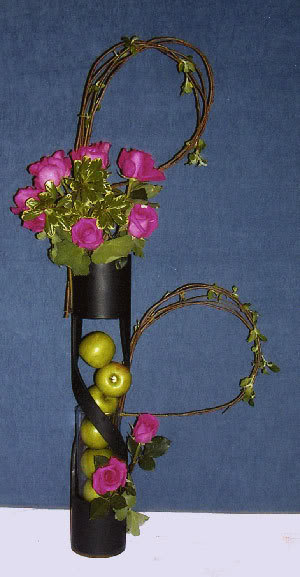
Gerry Ford, Lake Forest, "The rose family" a Monobotanic design
|
NGC Handbook For Flower Shows 2017
Chapter 7 IX. Advanced Design Types I. Mono-Botanic Design p. 79
A design using multiple parts of the plant/s of one family or genus.
- Plants may be stems, bloom/s, roots, fruit, foliage, etc.
- Schedule may determine the botanical requirements, such as family or genus, or indicate designer's freedom of choice.
From the previous Handbook
Italicized text has been added.
- A Creative Design using multiple parts of a plant/s of one family or genus.
Parts may be stems, bloom/s, foliage, roots, fruit, etc.
Definition of parts: not the whole - a portion (of a thing) - to separate
- Schedule may determine the botanical requirement, i.e., family or genus, or indicate that the designer may choose.
Plant material selection may be as specific as only one species, cultivar or variety.
Two or more parts of the family, genus, cultivar or variety must be used.
- Organization of plant material is designer's choice based on her/his imagination.
- Non-plant material may be included, but if so, there must be a greater emphasis on representative plant material in
volume and area than the non-plant material.
- Non-plant material may supply additional form and interest.
- Weathered wood may be used, but must meet the botanical requirements. In other words, it must be from the related plant group.
- Because of the botanical selection, the composition of the parts require imaginative applications and placement to achive shapes and forms.
- Plant material need not be grown by the exhibitor.
Learn more about horticulture and taxonomy while designing. This has been proven to be more difficult than was first thought,
see The Taxonomic Conundrum Unraveled.
Resources
|

Rachel's pineapple, Designer's Choice Club, Houston, TX

Chuckanut District, Washington State
|


